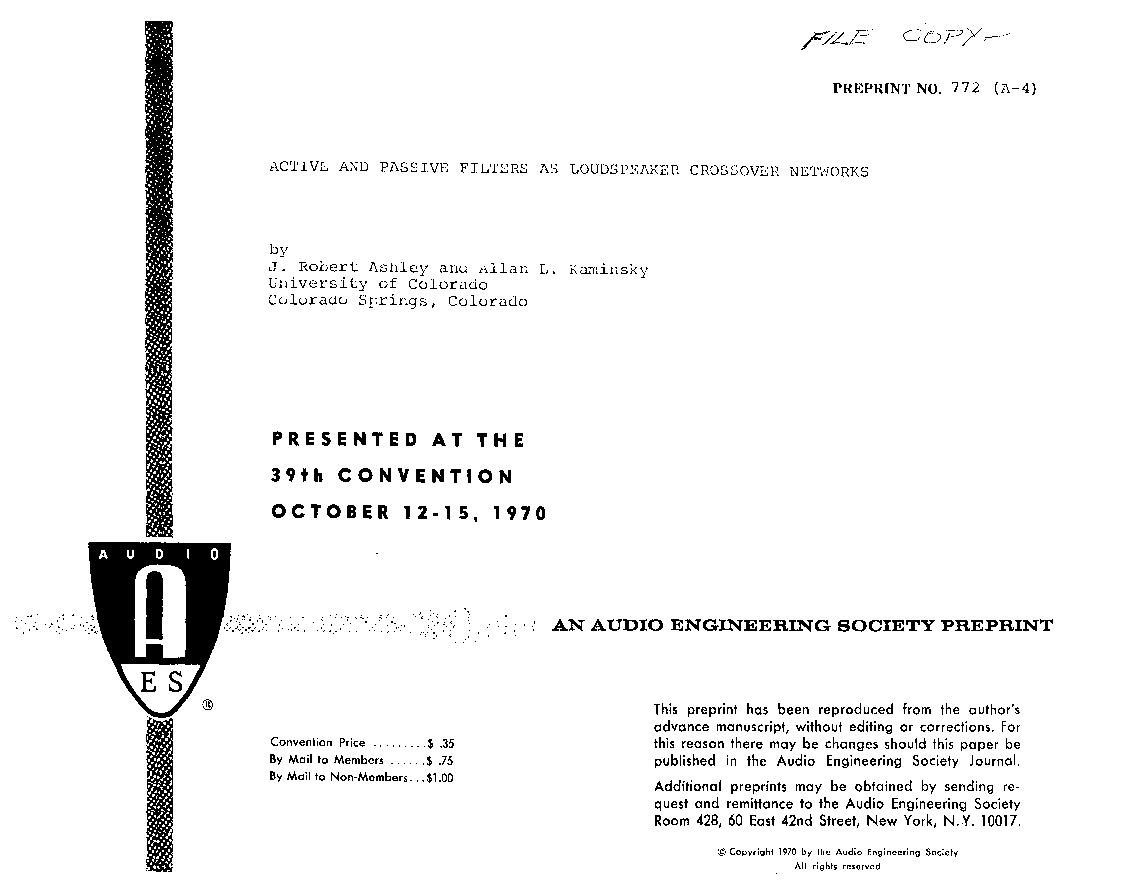Home / Publications / E-library page
You are currently logged in as an
Institutional Subscriber.
If you would like to logout,
please click on the button below.
Home / Publications / E-library page
Only AES members and Institutional Journal Subscribers can download
This tutorial paper defines the function of a crossover network and then explores methods of meeting this function. For moderately priced two-way loudspeakers, a passive network at about 800 to 1600 Hz. will continue to dominate the designs of the future. However, the use of active filters (electronic crossover networks) and buffer amplifiers offers the most significant means of loudspeaker improvement in the next decade. As one typical factor, crossover frequencies need to be lowered and crossover slopes increased and the active filter is the only economical method of doing this.
Author (s): Ashley, J. Robert; Kaminsky, Allan L.
Affiliation:
University of Colorado, Colorauo Springs, CO
(See document for exact affiliation information.)
AES Convention: 39
Paper Number:772
Publication Date:
1970-10-06
Import into BibTeX
Permalink: https://aes2.org/publications/elibrary-page/?id=1240
(935KB)
Click to purchase paper as a non-member or login as an AES member. If your company or school subscribes to the E-Library then switch to the institutional version. If you are not an AES member Join the AES. If you need to check your member status, login to the Member Portal.

Ashley, J. Robert; Kaminsky, Allan L.; 1970; Active and Passive Filters as Loudspeaker Crossover Networks [PDF]; University of Colorado, Colorauo Springs, CO; Paper 772; Available from: https://aes2.org/publications/elibrary-page/?id=1240
Ashley, J. Robert; Kaminsky, Allan L.; Active and Passive Filters as Loudspeaker Crossover Networks [PDF]; University of Colorado, Colorauo Springs, CO; Paper 772; 1970 Available: https://aes2.org/publications/elibrary-page/?id=1240